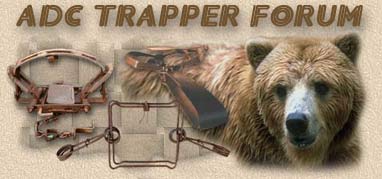Steve,
I know this topic was thrown around a bit some time ago, so probably a longer thread in the archives with some of what I'm about to say.
When it comes to wildlife disease of any kind, parasites, virus, bacteria, etc.... We can talk limiting risk with most things, but it is extremely hard, or even worse can cause liability when we claim completely risk free, or that we can absolutely reduce or destroy an organism to the point where a homeowner or client doesn't still have some remaining.
Exceptions are things that require the animal to be there to still exist (rabies is a good example). Without the warm blooded host rabies dies very quickly outside the organism especially in most ambient conditions (moist, cool environment will last longer).
So how I would look at someone asking me about how I will eliminate the possibility of raccoon roundworm would be focused on the methods you use to remove insulation, droppings and other materials from the attic space without contaminating the living quarters or air within the home or structure.
Now we all know some folks right now are pulling insulation out with raccoon droppings without a mask, tyvek, no barrier or air flow considerations and dragging broken bags right through their house and into the yard to the truck.
None of us want to be those folks, be they homeowner or poor service contractors.
So what can we do to ease the clients mind and minimize risk and liability through our claims? We follow solid procedures to protect ourselves, our crew and the homeowner through use of proper PPE (gloves, respirator, tyvek). Utilize air flow and drop cloth (clean room) equipment to establish areas where dirty and clean do not cross contaminate and utilize at a minimum HEPA vac technology to assure the smallest particles possible are being captured within the equipment used to remove after bulky insulation is out.
Flames, chemical mixes, steam, etc... are all ways folks discuss for killing it, but my analogy would be that if you remove say bat guano from an attic, can someone go in after you and find maybe a piece or two in some little nook or cranny? If so, think about the raccoon roundworm and whether you can ever say you removed it all or eliminated it all. I don't believe you can make this statement and not put yourself in a situation where you are being untruthful (in an attic anyway).
So why not discuss roundworm factually, the risks and the prevention, CDC and other docs including this one I attached are good resources. After insulation is removed and new is placed are the folks planning to be in the attic using it for storage? If not the risk goes down for future possibilities, are they going to use it for storage or renovate into a usable work space or spare bedroom, maybe the risk goes up, but they could employ their own ppe and should just to be around insulation without biohazard.
Some of this may hit for some folks and some may not, but my final thought would be since no one has created the full ability to kill and show 100% kill of raccoon roundworm in an attic, I would hesitate to be the guy/gal selling this type of service.
I would instead sell good disease risk management that is sound and proven and can do best by the clients or customers.
Hope that helps, here is a link from Ohio State, solid and good info.
http://ohioline.osu.edu/w-fact/pdf/0020.pdfJustin



![[Linked Image]](8a3gq5-1.jpg)
